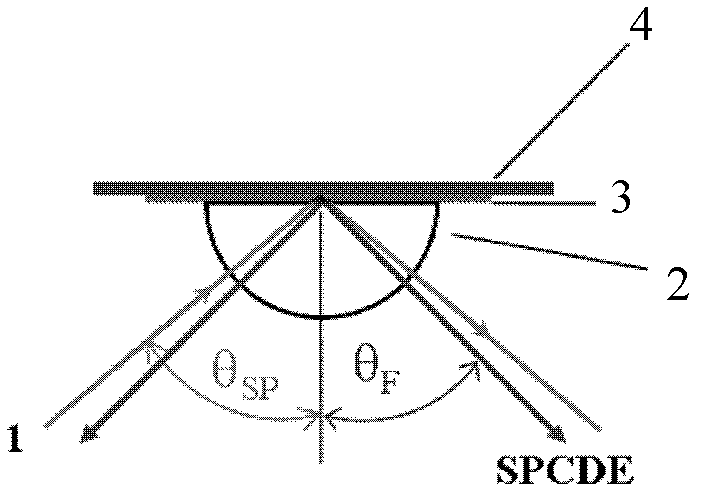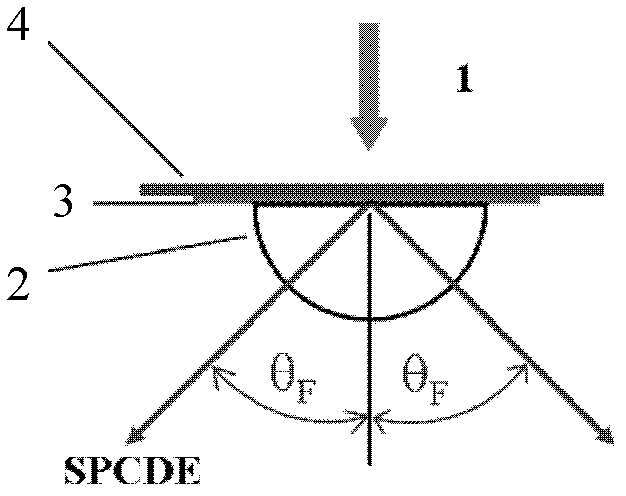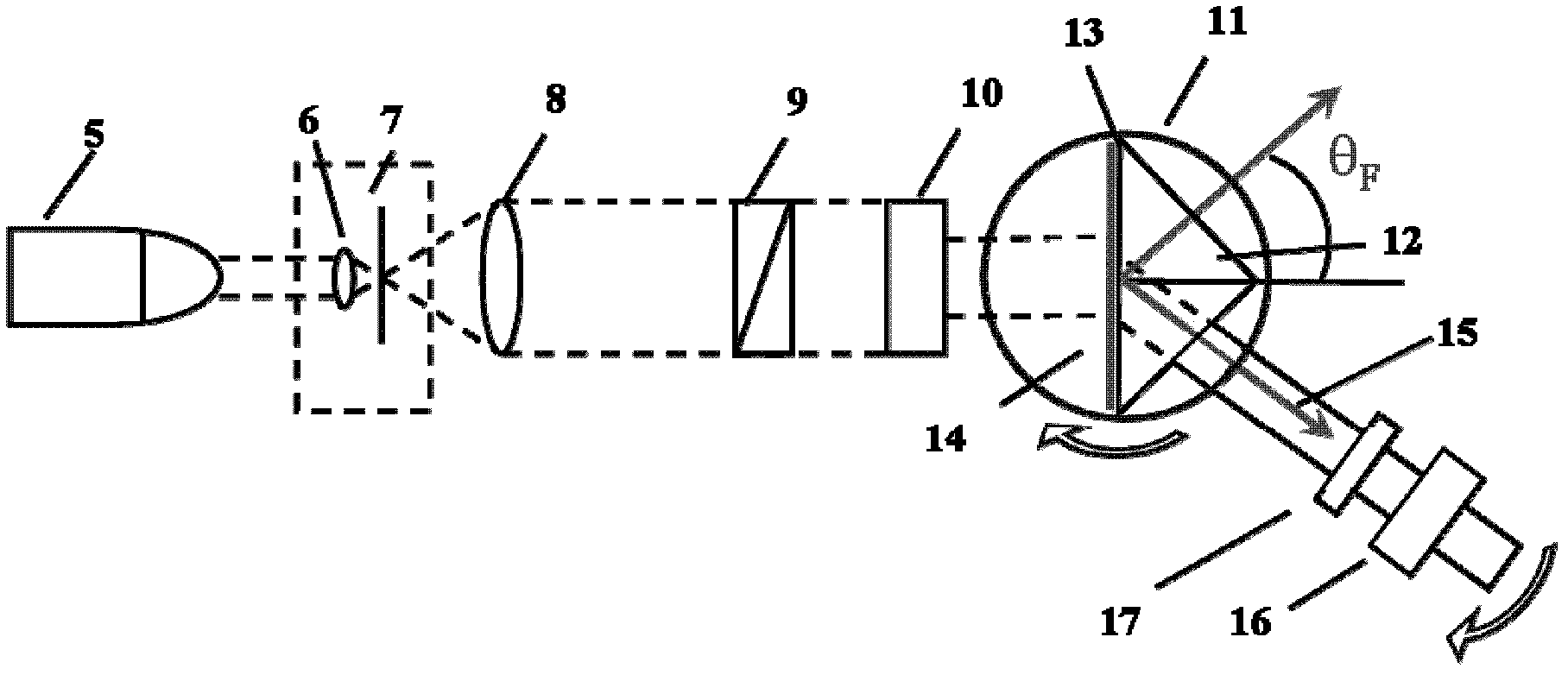Directional emission fluorescence imaging detection device
A fluorescence imaging and detection device technology, which is applied in the direction of fluorescence/phosphorescence, material excitation analysis, etc., can solve the problems of inability to quickly locate the region of interest, expensive, expensive devices, etc., to achieve easy implementation and promotion, rapid positioning, The effect of simple structure
- Summary
- Abstract
- Description
- Claims
- Application Information
AI Technical Summary
Problems solved by technology
Method used
Image
Examples
Embodiment Construction
[0028] The present invention will be further described below in conjunction with the embodiments and accompanying drawings.
[0029] Such as image 3 As shown, the embodiment of the present invention is provided with a laser beam expander system, a sample system and a detection system.
[0030] The laser beam expander system is provided with a laser light source 5, a microscopic objective lens 6, a pinhole 7, a plano-convex lens 8, an attenuator 9 and a rectangular diaphragm 10; the excitation light emitted by the laser light source 5 passes through the microscopic objective lens 6, After the beam is expanded and collimated by the pinhole 7 and the plano-convex lens 8, it becomes a parallel beam, and the parallel beam passes through the attenuator 9 and the rectangular diaphragm 10 in sequence to obtain a rectangular spot.
[0031] The sample system is provided with a rotary table 11, a sample holder, a prism 12 and an optical quartz substrate, the prism 12 is placed on the s...
PUM
| Property | Measurement | Unit |
|---|---|---|
| diameter | aaaaa | aaaaa |
Abstract
Description
Claims
Application Information
 Login to View More
Login to View More - R&D
- Intellectual Property
- Life Sciences
- Materials
- Tech Scout
- Unparalleled Data Quality
- Higher Quality Content
- 60% Fewer Hallucinations
Browse by: Latest US Patents, China's latest patents, Technical Efficacy Thesaurus, Application Domain, Technology Topic, Popular Technical Reports.
© 2025 PatSnap. All rights reserved.Legal|Privacy policy|Modern Slavery Act Transparency Statement|Sitemap|About US| Contact US: help@patsnap.com



